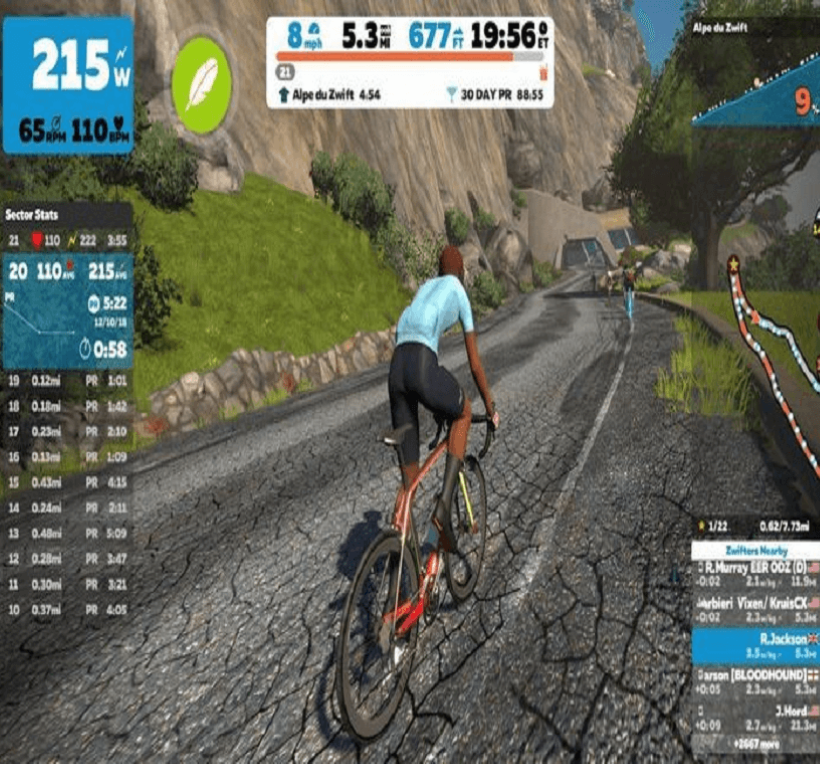

The Sports Property Playbook: How to Make Innovation Drive Real Revenue
2 min Read
The Sports Property Playbook: How to Make Innovation Drive Real Revenue
Why Innovation Isn’t Paying Off for Sports Properties (And How to Fix It)
Let’s cut to the chase—sports properties love to talk about innovation. Every major club, league, and federation has an “innovation strategy” or a shiny new partnership with a tech startup. But here’s the real question: How much of that innovation is actually delivering bottom-line impact?
Too often, new tech initiatives fizzle out. A pilot program gets launched, there’s some PR buzz, but six months later, nothing meaningful has changed. Why? Because sports organizations operate under a different set of rules—ones that many innovation teams and tech providers don’t fully understand.
The challenge isn’t finding the next big idea—it’s about making innovation work inside the complex business structure of sports. And with AI set to reshape everything from fan engagement to operations, getting this right is more important than ever.
So let’s break down the real barriers to successful innovation and, more importantly, how to overcome them.
The Real Challenges in Scaling Innovation at Sports Properties
1. Revenue Pressure Overrides Long-Term Thinking
Sports is a high-stakes, short-term business. Clubs and leagues live and die by seasonal revenue targets—ticket sales, sponsorship deals, and broadcast rights. If an innovation doesn’t show a direct path to revenue in the next 6–12 months, it’s a tough sell.
➡ Your Move: Position every innovation as a business driver. Don’t just say, “This AI-driven fan engagement tool increases interaction.” Instead, show how it converts engagement into ticket sales, increases sponsorship activation ROI, or reduces churn in memberships. If the impact isn’t clear, it won’t get prioritized.
2. AI is Here—But Most Teams Don’t Know How to Use It Yet
Everyone knows AI is the future. But most sports properties don’t have an AI strategy. Some are experimenting with chatbots, player analytics, or automated content creation, but very few have integrated AI in a way that truly moves the needle.
➡ Your Move: Don’t treat AI as a buzzword—treat it as a revenue multiplier. Use AI-powered personalization to drive higher fan spending, optimize pricing models, and create predictive analytics that help sponsorship teams sell smarter. The key is making AI work within the existing commercial structure, not just adding AI for the sake of it.
3. Fan Resistance to Change
Your most passionate fans love tradition. Anything that disrupts their game-day experience (or worse, makes them feel like they’re just being squeezed for more money) will face backlash.
➡ Your Move: Position innovation as an enhancement, not a replacement. The best innovations improve convenience (think frictionless payments, AI-powered customer service) or add new layers of engagement (like personalized content or AI-generated highlight reels). If it feels forced or transactional, fans will reject it.
4. The Innovation “Silo” Problem
Many sports organizations treat innovation as a side project. There’s an “innovation team,” but they don’t have budget authority, and their projects often get stuck in an endless loop of pilots with no real adoption.
➡ Your Move: Get innovation into the commercial conversation. If an initiative isn’t supported by the CRO, CMO, or CEO, it’s going nowhere. The best way to do this? Tie innovation to revenue—not just to fan experience or operational efficiency.
5. AI and Automation Are Replacing Old Ways of Working—But Are You Ready?
AI-powered automation is set to transform ticketing, marketing, sponsorship sales, and content production. But many clubs and leagues are still using outdated CRMs, legacy ticketing systems, and fragmented fan data.
➡ Your Move: Modernize your data infrastructure first. AI is only as good as the data it’s trained on. If your organization still relies on siloed databases, poor fan segmentation, or static sponsorship inventory models, AI won’t deliver real value. Invest in data consolidation before layering AI on top.
6. Decision-Making Bottlenecks
Sports organizations are complex, multi-stakeholder environments. Unlike startups, where decisions happen fast, clubs and leagues have owners, CEOs, commercial directors, tech teams, and even coaches weighing in on decisions.
➡ Your Move: Map out the internal decision-making process. Who actually holds budget power? Who has veto influence? Who needs to see a case study before signing off? The more precisely you target your pitch, the faster you can move from conversation to execution.
7. The “We Got Burned Before” Syndrome
Many clubs have been burned by past tech experiments—overpromised AI solutions, blockchain ticketing that didn’t scale, VR experiences that no one used. That makes them hesitant to invest in new tech again.
➡ Your Move: De-risk innovation. Offer performance-based pricing, revenue-share models, and pilot programs with clear success metrics. If an investment doesn’t feel like a gamble, executives are far more likely to greenlight it.
8. The Sponsorship Trap—Short-Term Thinking Kills Long-Term Value
Too often, sports properties treat innovation as a sponsorship activation play rather than a core business strategy. The result? Tech gets tied to one-off brand campaigns instead of becoming part of the long-term revenue model.
➡ Your Move: Think beyond activation. AI-driven sponsorship analytics can help increase the value of sponsorship assets, personalize brand interactions, and optimize inventory pricing. Don’t just use tech to execute brand campaigns—use it to redefine sponsorship valuation altogether.
9. AI vs. Big Tech—Who Owns Your Fan Data?
Many clubs and leagues default to working with Amazon, Google, and Meta because it feels “safe.” But here’s the problem: Big Tech owns the fan relationship, not you.
➡ Your Move: Own your fan data. AI-powered direct-to-fan platforms can help properties monetize fan relationships without relying on third-party platforms. Whether it’s AI-driven ticketing recommendations, personalized e-commerce, or exclusive membership models, the goal is to keep fan engagement inside your ecosystem—not Big Tech’s.
Winning with Innovation: The Playbook for Sports Properties
✅ Monetize AI, Don’t Just Experiment – Every AI initiative should have a clear revenue impact (ticketing, sponsorship, memberships, or cost savings).
✅ Pilot, Prove, Scale – Test small, measure results, and scale only what delivers ROI. Too many pilots fail because they aren’t linked to commercial outcomes.
✅ Integrate, Don’t Overhaul – AI and new tech should work with existing infrastructure. If it requires a massive systems change, adoption will stall.
✅ Sell Internally – Innovation needs buy-in from the CEO, CRO, and CMO. Without commercial leadership, it will stay stuck in the “R&D” bucket.
✅ Own the Fan Relationship – Don’t let Big Tech own your fan data and engagement. Invest in AI-powered tools that keep fans inside your digital ecosystem.
✅ De-Risk Innovation – Whether it’s performance-based contracts, revenue-sharing, or clear case studies, lower the perceived risk of trying new tech.
Final Thought: AI Will Reshape Sports—Are You Ready?
The next five years will see AI redefine fan engagement, sponsorship valuation, ticketing, and even how teams operate. But the properties that truly win won’t just chase the latest trends—they’ll align innovation with business fundamentals.
So before your next big tech investment, ask yourself:
Does this just sound innovative, or does it actually move the revenue needle?
Master that mindset, and you won’t just be “experimenting” with AI—you’ll be monetizing it.
This February, we’re hosting an exclusive AI & Sports Tech Showcase, featuring top solutions shaping the future of sports.
Want an invite? Fill out the form here.
Amir Raveh,
CEO – HYPE Sports Innovation




Comments
Fabrice Boutain